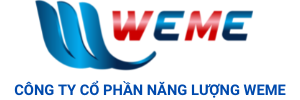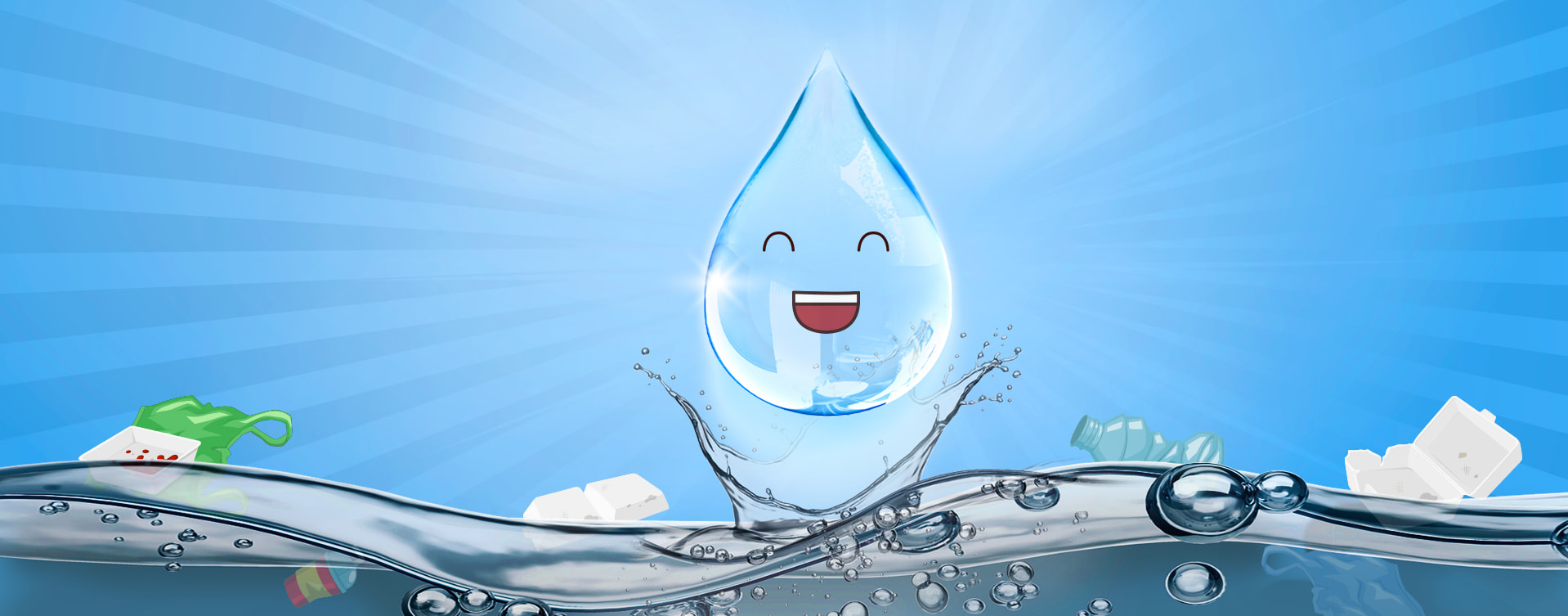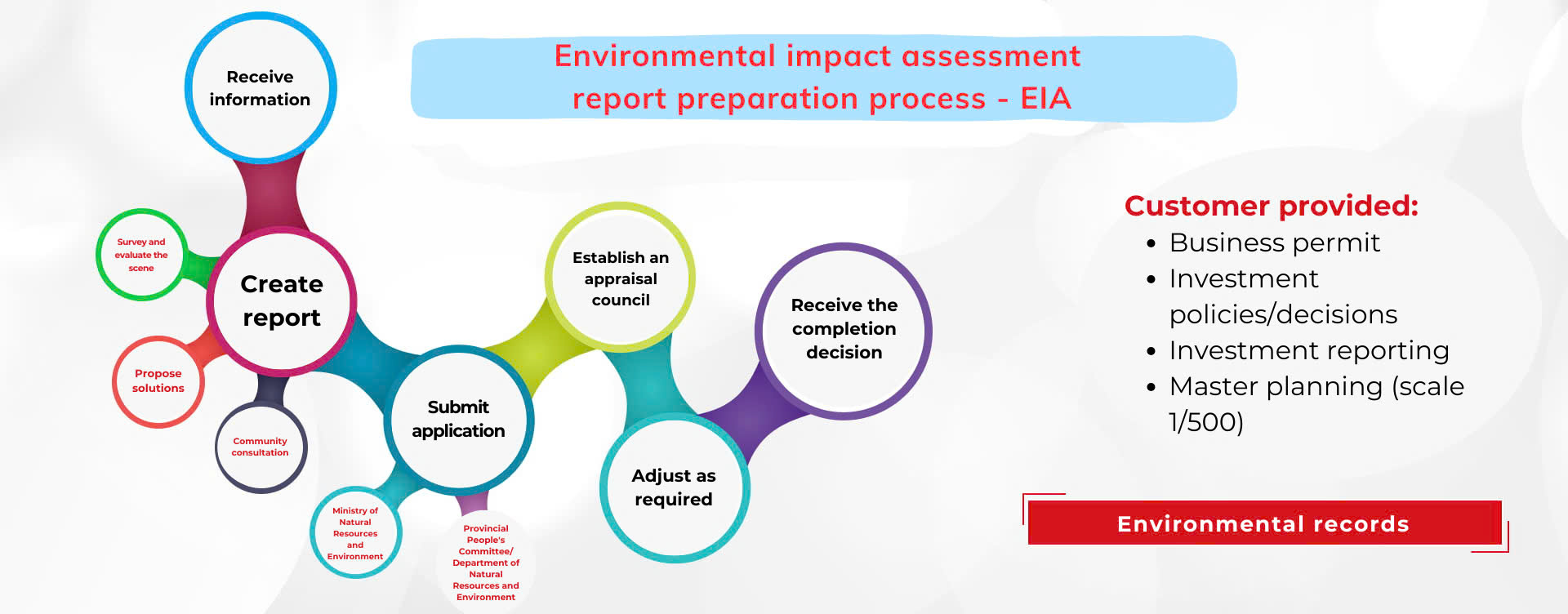Industrial wastewater treatment
Industrial wastewater treatment
The industry makes a significant contribution to the national economy. Alongside this, wastewater generated from industrial production activities is also a matter of great concern. To address this issue, an industrial wastewater treatment system using appropriate technology is needed to remove the pollutants present in the wastewater. Only then can sustainable development be ensured for businesses while complying with the state’s regulations on industrial wastewater management.
Overview of Industrial Wastewater Treatment
What is industrial wastewater?
Industrial wastewater is wastewater generated from factories, sites, and production facilities of organizations, households, or individuals, including:
- Processing facilities for agricultural, forestry, fishery products, food, alcohol, beer, beverages, and tobacco.
- Handicraft production facilities in craft villages.
- Manufacturing facilities: Paper, pulp, plastic, rubber; electrical and electronic components and equipment.
- Facilities: Tanning, leather recycling, textiles, dyeing, garment production.
- Facilities: Mechanical, metallurgy, metal processing, machinery, and spare parts manufacturing.
- Facilities: Basic chemicals, fertilizers, pharmaceuticals, pesticides, building materials, office supplies, household goods.
The characteristics and concentration of pollutants in industrial wastewater vary significantly depending on the type of industry and production activities applied by the business.
What is industrial wastewater treatment?
Industrial wastewater treatment is the use of appropriate processes and technology to treat wastewater generated from industrial activities. Pollutant parameters in the wastewater are brought to permissible values according to specific standards. After treatment, wastewater can be reused or discharged into natural receiving sources.
Industrial Wastewater Treatment Solutions from WeMe
Technology Flowchart Proposal
Technology flowchart for industrial wastewater treatment
Explanation:
- Wastewater is separated from trash, oil, and grease and is collected in a sump pit.
- Equalization tank: Balances the flow and concentration of wastewater. In this tank, air is continuously supplied to mix the wastewater, preventing anaerobic decomposition and foul odors.
- Neutralization-coagulation-flocculation process: Occurs through the reaction of PAC coagulants and flocculants. The formed colloidal particles bind together to create large flocs that can easily settle due to gravity.
- Settling tank: Separates the sludge from the water via gravity sedimentation. After settling, the water flows to an intermediate tank, while the sludge is pumped to a sludge storage tank.
- Aerotank: In this tank, aerobic microorganisms break down organic matter into CO2 and H2O, reducing pollutants in the wastewater.
- MBR Module – WeMe: Provides the necessary amount of microorganisms to remove BOD, COD, and N… Here, microorganisms, pollutants, and sludge are completely retained on the surface of the membrane. Since the pore size of the MBR membrane is very small (0.01 ~ 0.4 µm), biological sludge is retained in the tank, increasing the density of microorganisms and improving treatment efficiency. This advantage reduces the volume of the tank and the area required. Clean water is pumped out without needing to pass through a settling tank, filtration, or disinfection.
- Treated wastewater meets QCVN 40:2011/BTNMT column A/B for discharge into the receiving source.
Depending on the characteristics of the wastewater from each industrial sector, WeMe designs a system to be appropriate, with specific discharge standards. Please contact us for further consultation.
WeMe’s Project Implementation Process
The project implementation process for WeMe’s industrial wastewater treatment system includes the following steps:
- Step 1:
Information gathering and customer consultation: Collect relevant information about the facility’s operations, source water characteristics, the required quality of the output water, difficulties the customer is facing, and customer requirements to devise a suitable consultation and design plan.
- Step 2:
Field survey, experiments: Conduct field surveys at the project site to accurately gather the above information, take wastewater samples, and perform related experiments such as jartests to choose the most suitable treatment technology.
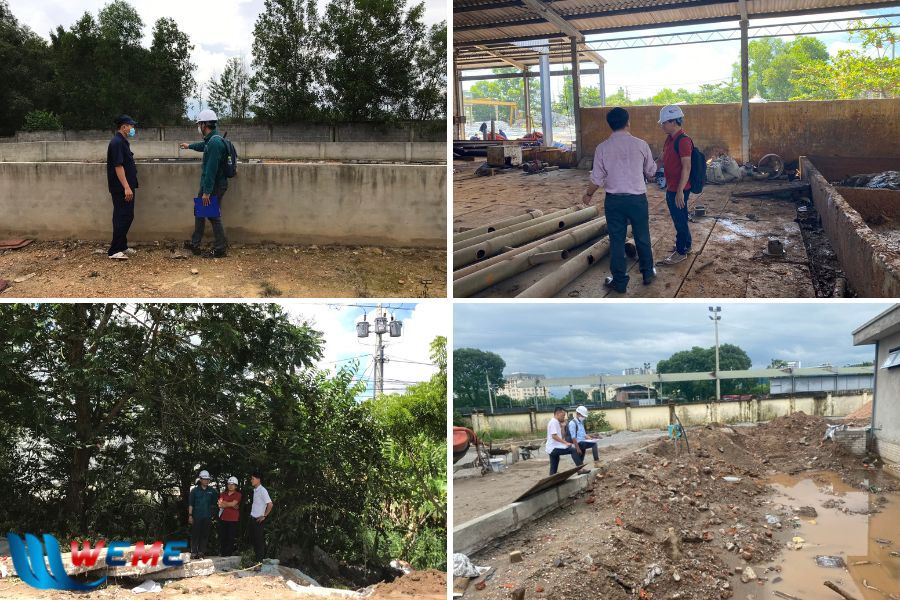
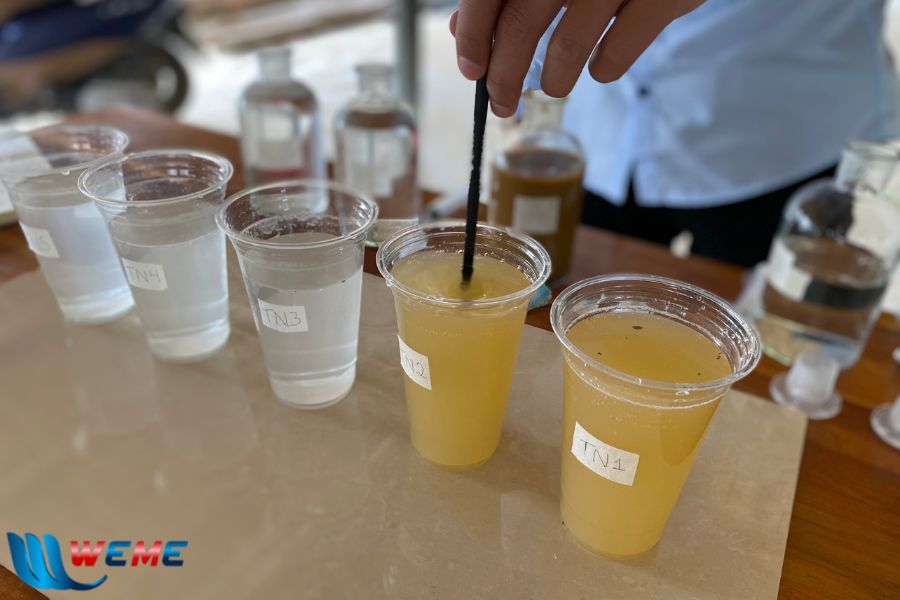
- Step 3:
Quotation, contract signing.
- Step 4:
System design: Detailed design of the required project components.
- Step 5:
Construction and system installation: Transporting machines, equipment, and materials to the construction site and proceeding with installation.
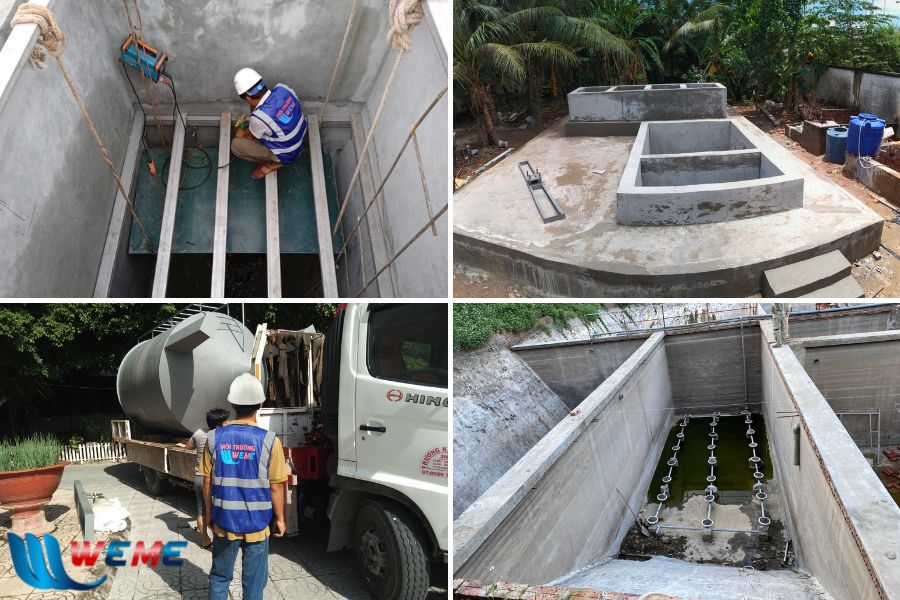
- Step 6:
System trial operation.
- Step 7:
Acceptance, handover, and operation training for the investor.
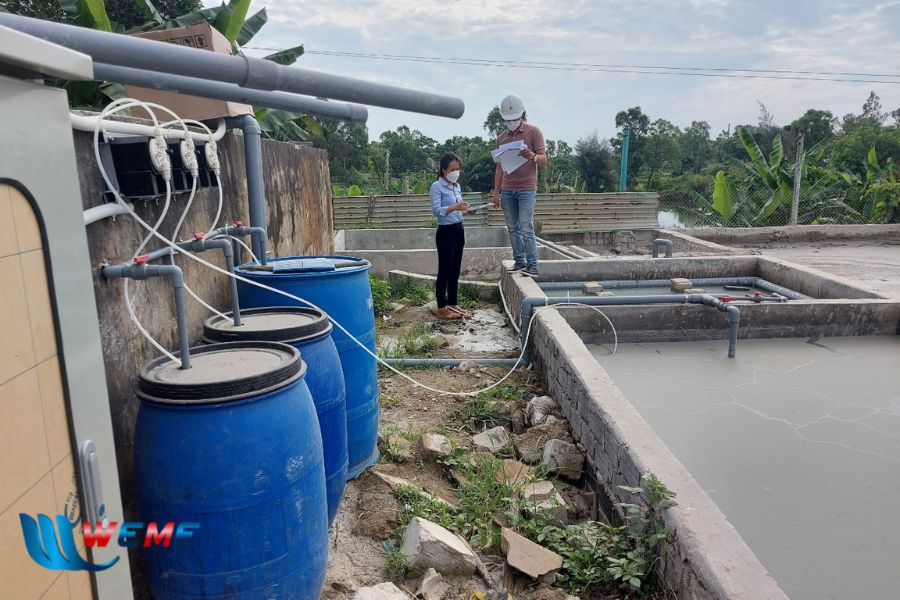
Some Images of WeMe’s Industrial Wastewater Treatment Projects
Below are some images of industrial wastewater treatment systems WeMe has implemented:
- Wastewater treatment for Mỹ Việt steel production company, with a capacity of 360 m³/day.
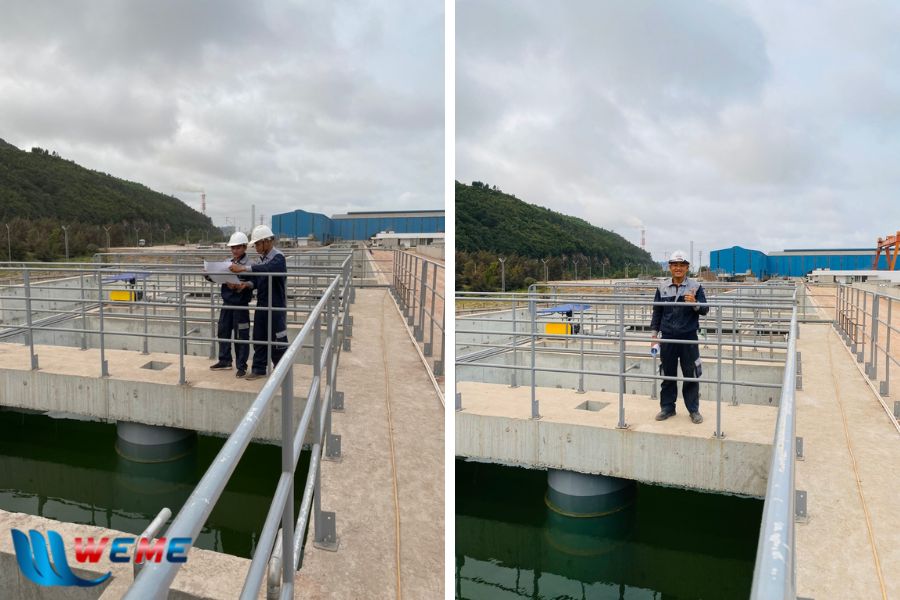
- Wastewater treatment for Nghi Sơn steel, with a capacity of 700 m³/day.
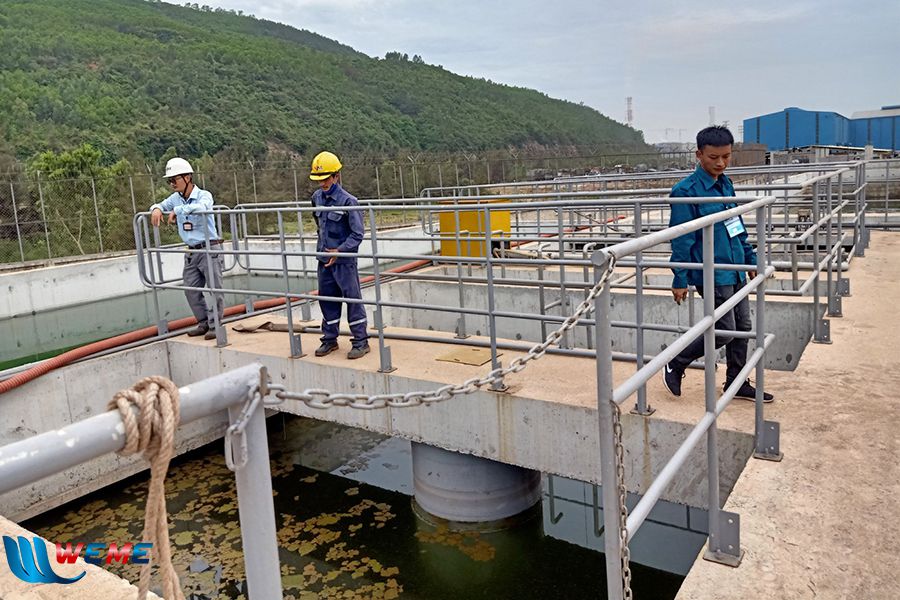
- Wastewater treatment for Phương Nam feather production company, with a capacity of 60 m³/day.
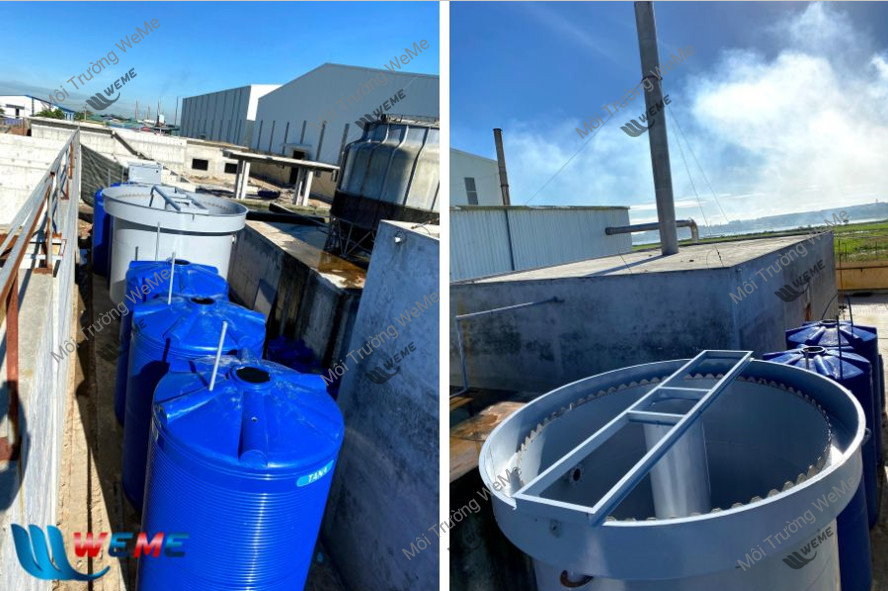
- Wastewater treatment for Poshaco steel, with a capacity of 144 m³/day.
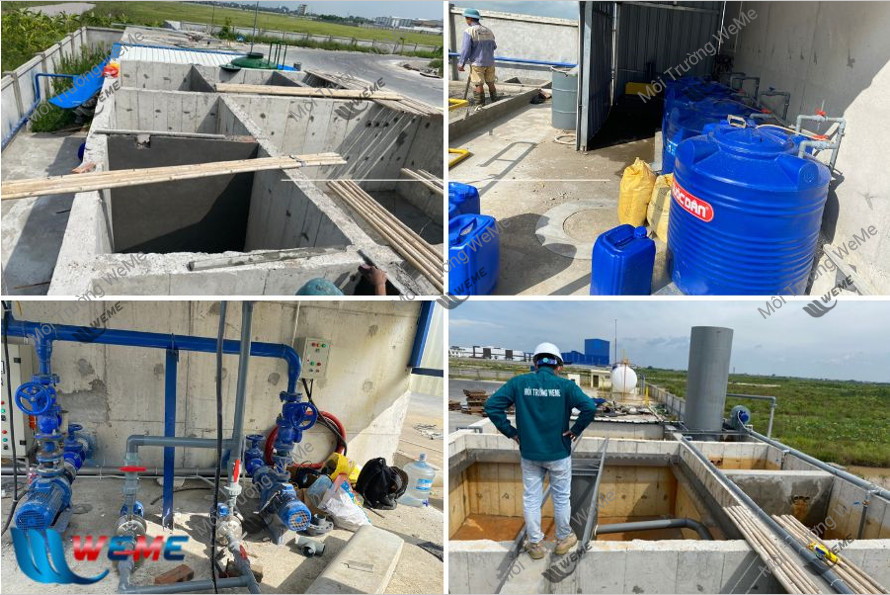
Criteria for Choosing an Industrial Wastewater Treatment System
Choosing an industrial wastewater treatment system must ensure the following factors:
- Wastewater characteristics: Each industry generates wastewater with different characteristics. Correspondingly, each type of wastewater requires suitable treatment technology;
- Technology efficiency: Ensure that pollutant parameters meet the discharge standards according to national regulations;
- Suitability for the terrain and the receiving source’s capacity for self-cleaning and load bearing;
- Land area savings: The use of advanced treatment technologies optimizes the area compared to traditional systems;
- Management, operation, and maintenance fit with the investment unit’s capacity;
- Reasonable investment cost, within the investor’s capacity;
- Environmental friendliness and safety;
- Easy capacity expansion or improvement of treatment efficiency in the future;
- Energy savings and the ability to reuse treated wastewater and sludge.
WeMe’s Commitment to Customers
To ensure our customers’ trust in WeMe’s services, especially our industrial wastewater treatment systems, we commit to:
- Ensure the output meets the discharge standards according to regulations;
- Apply advanced technology with multiple benefits to deliver the highest value to businesses;
- Support warranty and maintenance in case of incidents;
- Offer payment through a letter of guarantee, ensuring the rights of both the customer and the contractor;
- A professional team of engineers ready to consult and resolve any operational issues during the usage process.
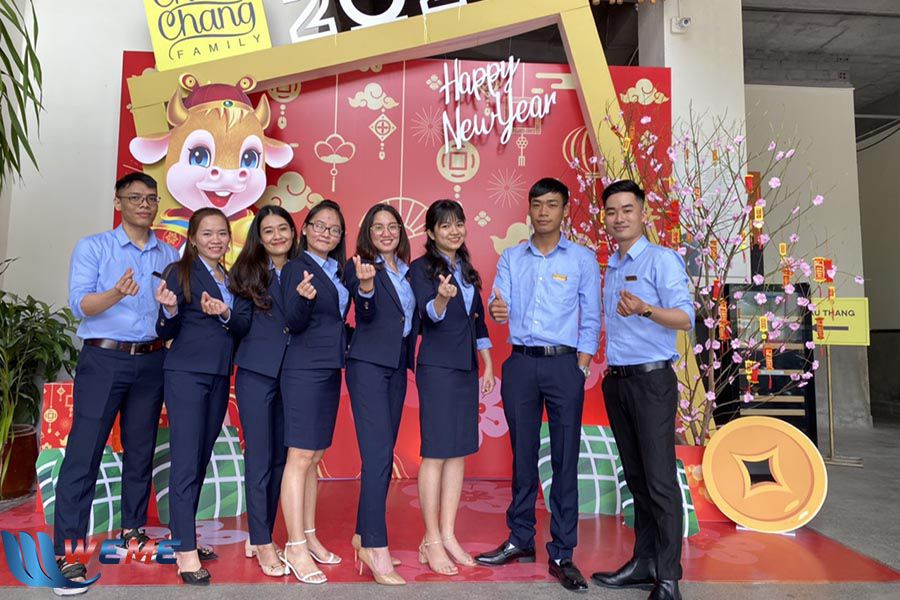
If you are interested in WeMe’s services, please leave your contact information HERE. WeMe will get back to you as soon as possible to consult and address all your questions. Accompanying our customers is our greatest pride at WeMe.

WeMe Energy Joint Stock Company
| Headquarters | : 124/1 Ly Thuong Kiet, Ward 7, Go Vap District, Ho Chi Minh City |
| Hotline | : 0906.653.007 |
| : wemecompany@gmail.com | |
| Fanpage | : Môi Trường WeMe |
| Northern Region (Consultant) | : 0845.653.007 |
| Central Region (Consultant) | : 0847.653.007 |
| Southern Region (Consultant) | : 0824.653.007 |
